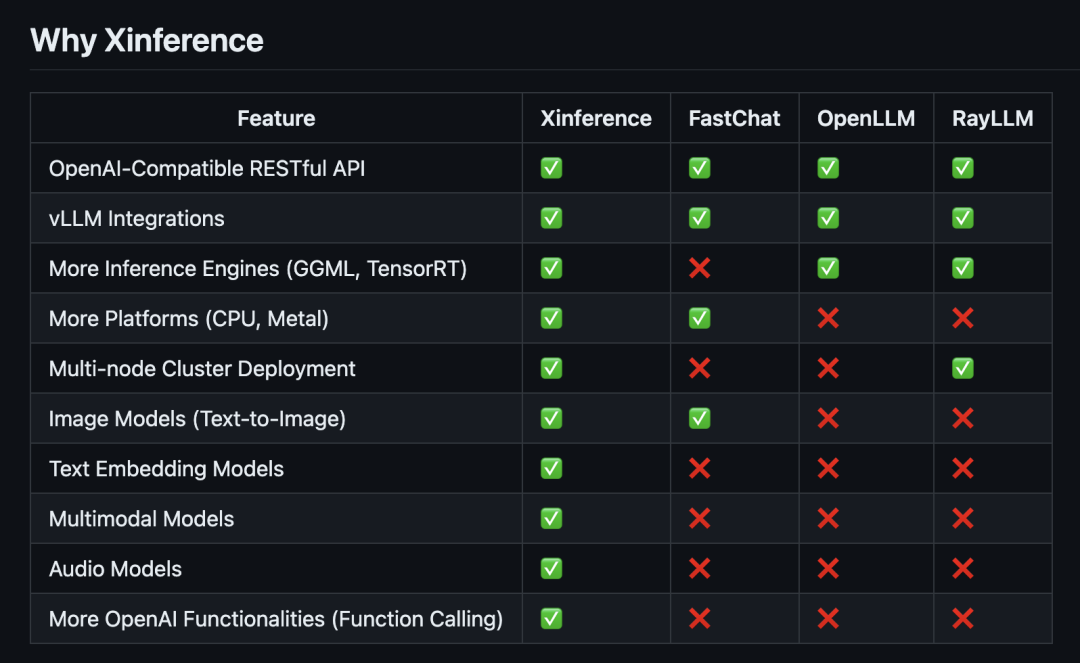Spring Boot 2.7.3 整合Swagger
maven 引入 Swagger包
1
2
3
4
5
6
7
8
9
10
11
12
13
14
15
16
17
18
19
20
21
22
23
24
| <dependency>
<groupId>io.springfox</groupId>
<artifactId>springfox-boot-starter</artifactId>
<version>3.0.0</version>
</dependency>
<dependency>
<groupId>com.github.xiaoymin</groupId>
<artifactId>knife4j-spring-boot-starter</artifactId>
<version>3.0.3</version>
<exclusions>
<exclusion>
<groupId>com.google.guava</groupId>
<artifactId>guava</artifactId>
</exclusion>
<exclusion>
<artifactId>swagger-models</artifactId>
<groupId>io.swagger</groupId>
</exclusion>
<exclusion>
<groupId>org.javassist</groupId>
<artifactId>javassist</artifactId>
</exclusion>
</exclusions>
</dependency>
|
添加 SwaggerConfig 配置类:
1
2
3
4
5
6
7
8
9
10
11
12
13
14
15
16
17
18
19
20
21
22
23
24
25
26
27
28
29
30
31
32
33
34
35
36
37
38
39
40
41
42
43
44
45
46
47
48
49
50
51
52
53
54
55
56
57
58
59
60
61
62
63
64
65
66
67
68
69
70
71
72
73
74
75
76
77
78
| import org.springframework.boot.actuate.autoconfigure.endpoint.web.CorsEndpointProperties;
import org.springframework.boot.actuate.autoconfigure.endpoint.web.WebEndpointProperties;
import org.springframework.boot.actuate.autoconfigure.web.server.ManagementPortType;
import org.springframework.boot.actuate.endpoint.ExposableEndpoint;
import org.springframework.boot.actuate.endpoint.web.*;
import org.springframework.boot.actuate.endpoint.web.annotation.ControllerEndpointsSupplier;
import org.springframework.boot.actuate.endpoint.web.annotation.ServletEndpointsSupplier;
import org.springframework.boot.actuate.endpoint.web.servlet.WebMvcEndpointHandlerMapping;
import org.springframework.context.annotation.Bean;
import org.springframework.context.annotation.Configuration;
import org.springframework.core.env.Environment;
import org.springframework.web.bind.annotation.RestController;
import springfox.documentation.builders.ApiInfoBuilder;
import springfox.documentation.builders.PathSelectors;
import springfox.documentation.builders.RequestHandlerSelectors;
import springfox.documentation.oas.annotations.EnableOpenApi;
import springfox.documentation.service.ApiInfo;
import springfox.documentation.service.Contact;
import springfox.documentation.spi.DocumentationType;
import springfox.documentation.spring.web.plugins.Docket;
import java.util.ArrayList;
import java.util.Collection;
import java.util.List;
@EnableOpenApi
@Configuration
public class SwaggerConfig {
@Bean
public ApiInfo apiInfo() {
return new ApiInfoBuilder()
.title("XX系统管理api接口文档")
.description("XX系统管理api接口文档")
.termsOfServiceUrl("https://localhost:8080")
.contact(new Contact("Z","https://zerocc.top","xxx@csdn.net"))
.version("1.0")
.build();
}
@Bean
public Docket createRestApi(ApiInfo apiInfo) {
return new Docket(DocumentationType.OAS_30)
.apiInfo(apiInfo)
.groupName("SwaggerGroupOneAPI")
.select()
.apis(RequestHandlerSelectors.withClassAnnotation(RestController.class))
.paths(PathSelectors.any())
.build();
}
@Bean
public WebMvcEndpointHandlerMapping webEndpointServletHandlerMapping(WebEndpointsSupplier webEndpointsSupplier, ServletEndpointsSupplier servletEndpointsSupplier, ControllerEndpointsSupplier controllerEndpointsSupplier, EndpointMediaTypes endpointMediaTypes, CorsEndpointProperties corsProperties, WebEndpointProperties webEndpointProperties, Environment environment) {
List<ExposableEndpoint<?>> allEndpoints = new ArrayList();
Collection<ExposableWebEndpoint> webEndpoints = webEndpointsSupplier.getEndpoints();
allEndpoints.addAll(webEndpoints);
allEndpoints.addAll(servletEndpointsSupplier.getEndpoints());
allEndpoints.addAll(controllerEndpointsSupplier.getEndpoints());
String basePath = webEndpointProperties.getBasePath();
EndpointMapping endpointMapping = new EndpointMapping(basePath);
boolean shouldRegisterLinksMapping = this.shouldRegisterLinksMapping(webEndpointProperties, environment, basePath);
return new WebMvcEndpointHandlerMapping(endpointMapping, webEndpoints, endpointMediaTypes, corsProperties.toCorsConfiguration(), new EndpointLinksResolver(allEndpoints, basePath), shouldRegisterLinksMapping, null);
}
private boolean shouldRegisterLinksMapping(WebEndpointProperties webEndpointProperties, Environment environment, String basePath) {
return webEndpointProperties.getDiscovery().isEnabled() && (StringUtils.hasText(basePath) || ManagementPortType.get(environment).equals(ManagementPortType.DIFFERENT));
}
}
|
StringUtils 中 的hasText
1
2
3
4
5
6
7
8
9
10
11
12
13
14
15
| public static boolean hasText(String str) {
return str != null && !str.isEmpty() && containsText(str);
}
private static boolean containsText(CharSequence str) {
int strLen = str.length();
for(int i = 0; i < strLen; ++i) {
if (!Character.isWhitespace(str.charAt(i))) {
return true;
}
}
return false;
}
|
正常启动工程后访问
swagger的传统页面
http://localhost:15666/swagger-ui/index.html

基于knife4j-spring-boot-starter 优化ui 体验 并且可以导出 离线文档
http://localhost:15666/doc.html

部分写法及例子
@ApiModel 和 @ApiModelProperty
@ApiModel(description = “”) :用在 JavaBean 类上,说明 JavaBean 的 用途
@ApiModelProperty(value = “”) :用在 JavaBean 类的属性上面,说明此属性的的含义
1
2
3
4
5
6
| @ApiModel(description = "用户表")
public class UserEntity implements Serializable {
@ApiModelProperty(value = "主键ID")
private Long id;
...
}
|
@Api
@Api(tags = “”):用在请求的类上,表示对类的说明
1、tags=“说明该类的作用,可以在UI界面上看到的注解”
2、value=“该参数没什么意义,在UI界面上也看到,所以不需要配置”`(不需要配置)
1
2
3
4
5
| @Api(tags = "标签管理系统")
@Slf4j
@RestController
@RequestMapping("/tags-web")
public class TagsWebController {}
|
@ApiOperationSupport 和 @ApiOperation
@ApiOperationSupport(author = “”) 相当于接口作者
@ApiOperation(“”) 相当于是 @ApiOperation(value = “”)
@ApiOperation:用在请求的方法上,说明方法的用途、作用
1、value=“说明方法的用途、作用”
2、notes=”方法的备注说明(看情况,一般不需要配置)
例子: @ApiOperation(value=“用户注册”,notes=“用户名和密码是必填项,年龄随便填,但必须是数字”)
1
2
3
4
5
6
7
8
| @ApiOperation(value = "新增一级或二级标签",notes = "一二级标签只记录级别和名称即可")
@PostMapping("/tags/add-one-two")
public R addData(@RequestBody List<TagDto> tags) {
if (tags == null) {
return R.fail("标签集合不能为空");
}
return tagService.addTag(tags);
}
|
@ApiImplicitParam 和 @ApiImplicitParams
@ApilmplicitParams:用在请求的方法上,表示一组参数说明
@ApiImplicitParam:用在 @ApiImplicitParams 注解中,指定一个请求参数的各个方面
- name:参数名(必须)
- value:参数的汉字说明、解释(必须)
- required:参数是否必须传,默认false(如果可不传也可以不写)
- paramType:参数放在哪个地方,查询参数类型,这里有几种形式(实体/数组/集合必须写,非左边三种可写可不写)
header(非常少用)→ 请求参数的获取:@RequestHeader,参数在 request headers(请求头)里边提交
query(常用)→ 请求参数的获取:@RequestParam,用于 get 请求的参数拼接,直接跟参数,完成自动映射赋值
path(一般)→ 请求参数的获取:@PathVariable,以地址的形式提交数据
body(常用)→ 请求参数的获取:@RequestBody,以流的形式提交 仅支持 POST
1
2
3
4
5
6
7
8
9
10
| @ApiOperation(value = "标签查询")
@ApiImplicitParams({
@ApiImplicitParam(name = "state", value = "标签状态", dataType = "String",paramType = "query"),
@ApiImplicitParam(name = "level", value = "标签等级", dataType = "String" ,paramType = "query"),
@ApiImplicitParam(name = "pid", value = "上级标签id", dataType = "Integer",paramType = "query")
})
@GetMapping("/tags")
public R listData(@ApiIgnore @RequestParam Map<String, Object> params) {
return tagService.listData(params);
}
|









